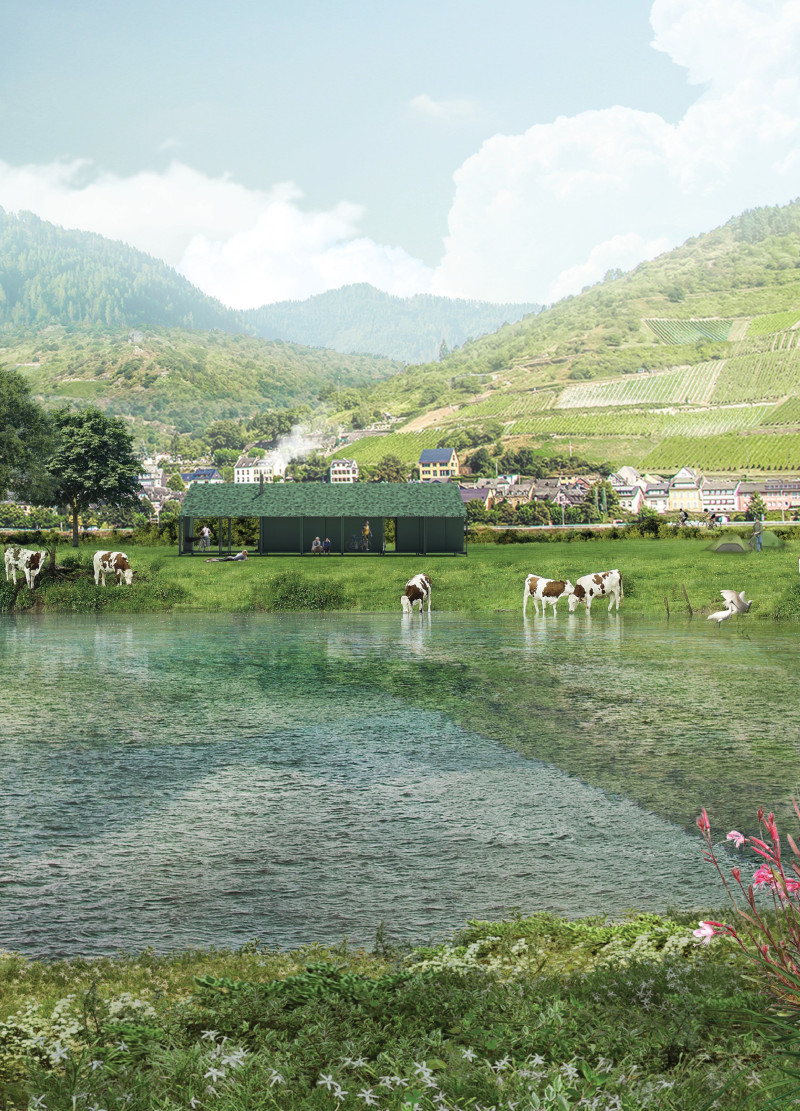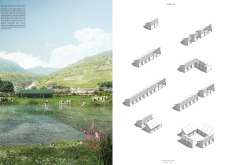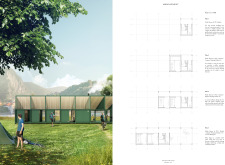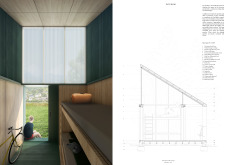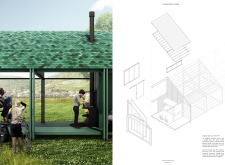5 key facts about this project
At its core, the project represents a user-centered approach to architecture, acknowledging the nuances of a growing cycling culture. The design incorporates rest stops that offer shelter, refreshment, and facilities, ensuring that cyclists can recharge during their journeys. This functionality is complemented by a strong emphasis on aesthetics, allowing the structure to blend in with its surroundings instead of imposing on the landscape.
The architectural design comprises several important elements that work together to create a cohesive and inviting experience. The exterior is characterized by a minimalist approach, with a combination of materials that harmonize well with the natural environment. The predominant use of wood for cladding and interiors conveys a sense of warmth and connection to nature, while the steel framework provides structural integrity. Additionally, glass elements are integrated throughout the design to maximize natural light, creating an open and airy atmosphere inside the modules.
One of the unique design approaches taken in this project is the modular nature of the cycle stops. The ability to configure the modules in various layouts allows for flexibility in addressing different site conditions and user requirements. This adaptability ensures that the design can evolve over time, accommodating varying levels of demand from cyclists and potentially expanding to include additional facilities. The strategic placement of essential amenities, such as washing stations and resting areas, reflects an understanding of the cyclist's needs on long journeys.
The interior design fosters a sense of comfort and accessibility, incorporating thoughtful details that enhance functionality. Each module contains basic amenities tailored to the specific needs of cyclists, ensuring they feel welcomed and supported during their stop. Moreover, the design preserves privacy while maintaining visual connections to the surrounding landscape, striking a balance between individual space and engagement with nature.
The integration of sustainable practices is another key aspect of the project. By using environmentally friendly materials and energy-efficient design principles, the project aligns with contemporary architectural trends that prioritize sustainability. The elevated structure minimizes disruption to the local ecosystem, illustrating the importance of environmental stewardship in modern architecture.
Overall, the European Velo 6 Cycle Stops project exemplifies a practical and aesthetic approach to architectural design, prioritizing the cyclist's experience while respecting the surrounding environment. Its modularity and sustainable design strategies address both immediate and future needs, promoting cycling as a viable means of transportation in Europe. To gain deeper insights into this project, including its architectural plans, sections, designs, and ideas, readers are encouraged to explore the project presentation further.


